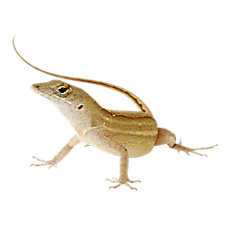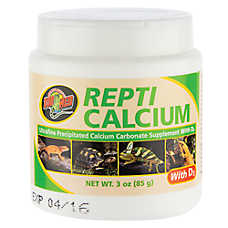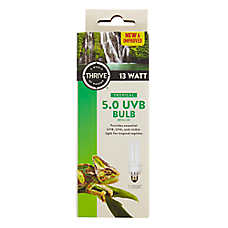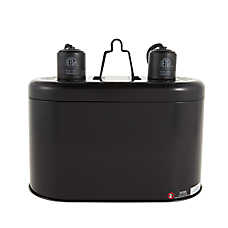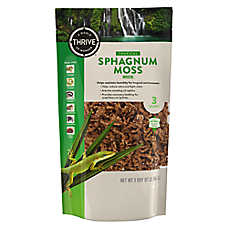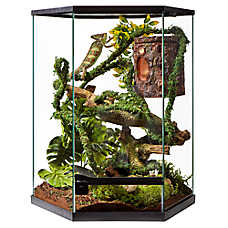Anole Care Guide
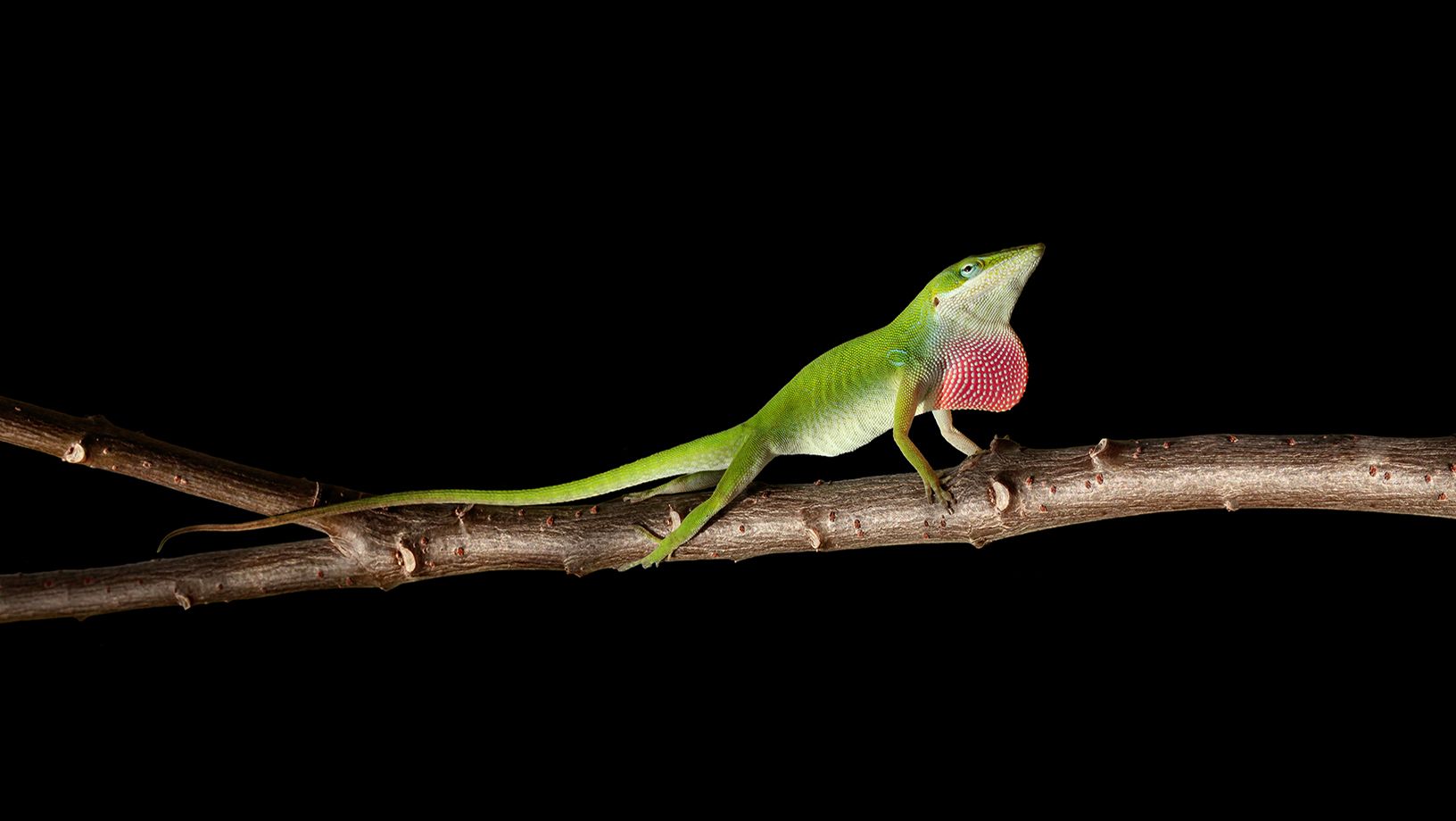
In this Article
Vibrant and Vivacious Anoles!
Green anoles are slender lizards native to the neo-tropical regions of United States. They come in multiples shades of green and brown, but are also able to change their color! This color changing ability has earned them the nickname “the American chameleon.” Don’t be fooled though, anoles are more closely related to iguanas than they are chameleons.
Anole species profile
Reptile experience level: Beginner to intermediate
Size: Anoles grow up to 8" (20 cm) from nose to tip of their tail.
Lifespan: They on average live 10 years in captivity
Behavior: Anoles are diurnal meaning they are active during the day. They are also considered semi-arboreal which means they spend a fair amount of their time climbing in trees.
Temperament: Due to concerns of fighting over territory and unintended breeding, we recommend housing your green anole on its own. That said, anoles are usually pretty docile with people. They are more suited to being “decorative” pets rather than interactive, but your anole can become accustomed to gentle handling if you take time and let your new pet slowly learn to trust that you mean no harm and usually bring good things (like food!)
Setting up your anole habitat
Green anoles thrive in humid, vertically arranged environments. Their enclosure should mimic the warm, plant-rich forests of their natural habitat, with plenty of climbing access and consistent moisture.
Enclosure size and layout
- House one anole in at least a 20-gallon vertical terrarium with a secure screened lid
- Choose a tall tank with ample vertical space for climbing and perching
- Use reptile carpet or 2 to 3 inches of coconut fiber, moss, or bark substrate to line the bottom
- Avoid sand, gravel, or soil, which may cause impaction if ingested
- Set up your reptile lighting on the outside of the enclosure, over top of the screened lid, to provide light and warmth in a way that your anole cannot get too close to the bulb to harm themselves.
- Many reptiles benefit from having access to UVB lighting. UVB allows the body to synthesize vitamin D3 which is critical for absorption of calcium. Some daylight bulbs will be rated to also provide UVB, and some won’t so it is important to check. Providing low-intensity UVB light over the basking site is recommended.
- Spot clean daily, stir the bedding every other week, and replace monthly
Branches, foliage, and hiding spots
- Add plenty of artificial or live plants to provide shade, cover, and climbing enrichment
- Include sturdy branches and vines that allow your anole to rest at different heights
- Create multiple hiding spots using cork bark, rocks, or decorative huts
- A dense, vertical layout helps your anole feel secure and encourages natural behaviors
Temperature and humidity needs
In order to thrive, Green anoles need stable humidity as well as a temperature gradient (warmer on top and cooler on the bottom). Place digital thermometers at both the top and bottom of the enclosure, and a hygrometer at mid-height to track moisture levels.
Zone | Temperature |
|---|---|
Cool zone | 75–85°F (24–29°C) |
Warm Zone | 85–90°F (29–32°C) |
Basking Area | 90–92°F (32–33°C) |
Night | 65–75°F (18–24°C) |
Humidity | 60–80% |
Feeding your green anole
Green anoles are insectivores and require a consistent supply of small, gut-loaded live insects. They thrive on variety, and their appetite can be influenced by temperature, stress levels, and time of day.
Insect feeding schedule
- Daily feeding: Offer 2 to 5 appropriately sized gut-loaded crickets or dubia roaches
- Treats (1–2 times per week): Mealworms, phoenix worms, or small hornworms can be offered for enrichment and dietary diversity
- Size guideline: Never offer prey larger than the width between your anole’s eyes
Remove uneaten insects after 15–30 minutes to prevent stress or injury to your lizard.
Supplementation
- Calcium with D3: Dust prey 2 to 3 times per week to support bone health
- Reptile multivitamin: Use once weekly or as directed by your exotic veterinarian
Supplementing consistently is crucial for preventing metabolic bone disease and other nutritional deficiencies.
Water and hydration
- Provide a shallow dish of clean, dechlorinated water at all times
- Mist the enclosure and your anole 2 to 3 times daily to encourage drinking and maintain proper humidity
- Anoles often drink water droplets from leaves and enclosure walls, rather than from a bowl
What does “gut-loaded” mean?
Gut loading refers to feeding feeder insects a high-nutrient diet before they are offered to your anole. This process increases the nutritional value of the prey and supports your pet’s overall health. Use commercial gut-load formulas or fresh vegetables like leafy greens and squash to feed your insects at least 24 hours before feeding them to your lizard.
Note: Do not feed your anole wild insects, as they may be carrying parasites or may have come into contact with pesticides that can make your pet very sick.
When to see a vet
In addition to regularly scheduled appointments, contact your reptile veterinarian if you notice the following signs:
- hiding more than usual
- eating or drinking less; weight loss
- swollen joints or reluctance to move
- discharge from the eyes, nose or mouth
- shedding problems; discolored skin
- runny droppings for more than two days
- decreased frequency in droppings
- increased basking time
Go to “find a vet” on arav.org for help finding a reptile veterinarian in your area.
NOTE: Most, if not all, reptiles carry Salmonella bacteria in their intestinal tract and intermittently or continuously shed these bacteria in their feces, so they are unsuitable pets for very young children and those with compromised immune systems. Good hygiene must always be practiced around all reptiles, and hands should be washed before and after interacting with reptiles.
SHOPPING CHECKLIST
- 20-gallon terrarium or larger
- screened lid
- habitat thermometers (2) and hygrometer
- UVB bulb and fixture & heat lamp with bulbs
- spray bottle for misting
- combination of coconut fiber, reptile bark and moss bedding
- artificial/natural rock or wood hiding spot
- branches for climbing and hiding
- hide
- food bowl
- water bowl
- live prey insects (gut-loaded crickets, dubia roaches, mealworms)
- Calcium supplement and multivitamin supplement
Ready to learn more?
This guide is a great starting place, but we encourage you to do more research on the individual species that you are keeping so that you can be as successful as possible!
Related guides:
Frequently Asked Questions (FAQs)
Can I keep more than one anole in the same tank? It’s best to house your anole alone. While some pet parents try to keep small groups, anoles can be territorial, especially males. Housing more than one increases the risk of stress, injury, or breeding complications.
Why is my anole turning brown? Anoles naturally change color based on mood, temperature, and stress. A change in color color can indicate your anole is cold, stressed, or feeling unwell. Double-check your habitat conditions and consult a vet if the color change persists.
How often should I mist the habitat? Mist the habitat two to three times per day. Anoles rely on droplets on leaves and surfaces to drink, so regular misting supports both hydration and humidity needs.
Does my anole need a heat lamp and UVB light? Yes. Anoles are diurnal reptiles that need both a basking lamp and a UVB light to regulate body temperature and metabolize calcium. Without UVB exposure, they are at risk of developing metabolic bone disease.
What should I do if my anole stops eating? Start by checking the temperature, humidity, and cleanliness of the habitat. Make sure your anole is not stressed, and try offering smaller or more active prey. If your anole refuses food for more than three days, consult an exotic veterinarian.

